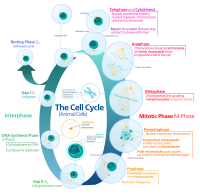
Photo from wikipedia
Ultraviolet (UV) filters are widely used in personal care products and due to their lipophilicity these chemicals tend to bioaccumulate in the aquatic biota. 4-Methylbenzylidene camphor (4-MBC) is one of… Click to show full abstract
Ultraviolet (UV) filters are widely used in personal care products and due to their lipophilicity these chemicals tend to bioaccumulate in the aquatic biota. 4-Methylbenzylidene camphor (4-MBC) is one of the most used UV-filters, and it is commonly detected in freshwater fish tissues. This substance is suspected to be an endocrine disruptor due to its interaction with Hypothalamus-Pituitary-Gonadal (HPG) and HP-Thyroid (HPT)-axis. The main objective of this study was to evaluate the effects of 4-MBC on apical endpoints, biochemical markers and on genes involved in endocrine pathways in Danio rerio. Zebrafish embryos were exposed to 4-MBC (0.083-0.77 mg/l) from 0 to 96 h post-fertilization (hpf). Hatching, heart rate and malformations were the apical endpoints assessed. Alterations on neurotransmission and oxidative stress were evaluated through acetylcholinesterase (AChE), catalase (CAT) and glutathione S-transferase (GST) enzymatic activities. Endocrine effects were analysed by the expression of genes involved in HPG and HPT-axis of embryos exposed 96 h to the EC10 of 4-MBC (0.19 mg/l). Exposure to 4-MBC induced morphological abnormalities during embryonic development, including notochord curvature, delayed absorption of yolk sac and pericardial oedema. Concentration of 0.77 mg/l 4-MBC decreased embryo heart rate at 48h. At neurotransmission level, an induction of AChE at concentrations above 0.15 mg/l was observed. Malformations and decreased heart rate along with alterations observed at neurotransmission level might have compromised zebrafish larvae equilibrium. Glutathione S-transferase induction above 0.15 mg/l 4-MBC suggests activation of detoxification processes. Furthermore, observed brain aromatase gene down-regulation by 4-MBC suggests impairment of normal functioning of HPG axis in zebrafish.
Journal Title: Chemosphere
Year Published: 2019
Link to full text (if available)
Share on Social Media: Sign Up to like & get
recommendations!